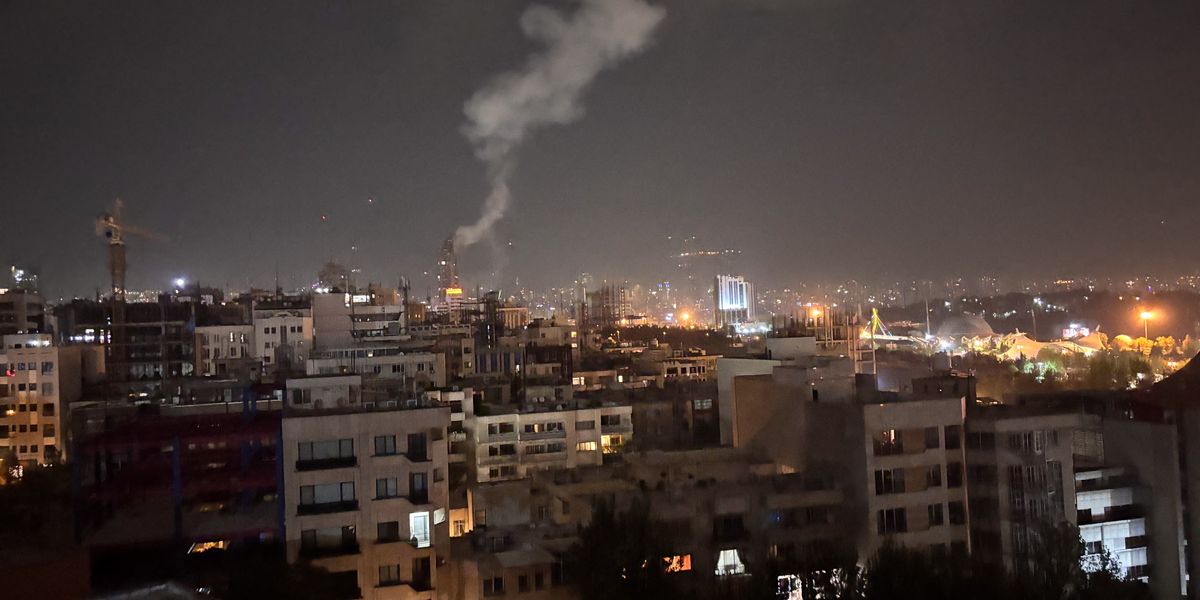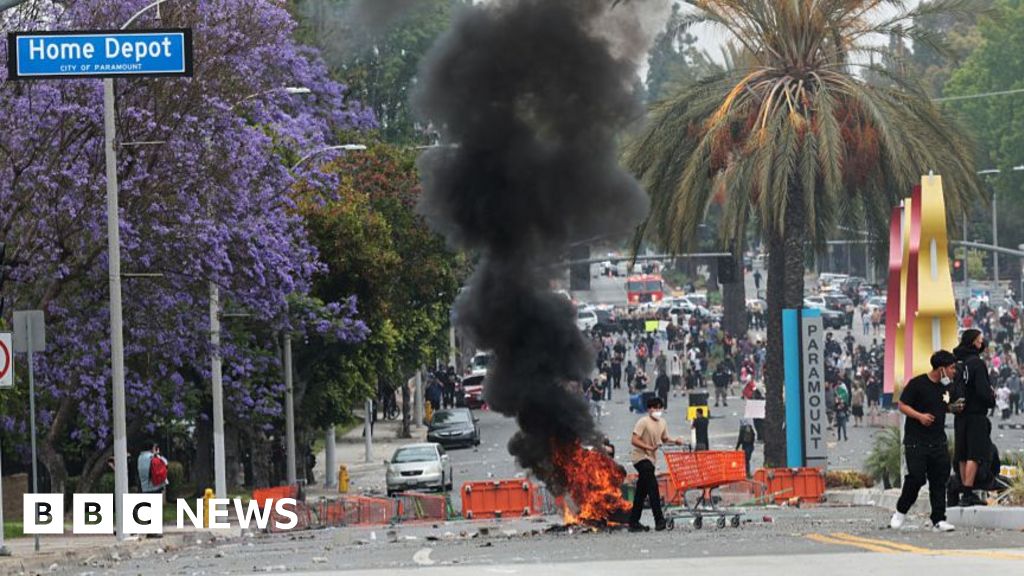FINE PRINT / OPINION — “This report explores the environmental effects and societal and economic consequences that would be expected to follow in the weeks-to-decades after a nuclear war. The exploration begins…with the consideration of four plausible scenarios for the employment of nuclear weapons, along with description of the immediate effects of the energy release and blast from a nuclear detonation.”
That’s an excerpt from Chapter 2 of a new congressionally-mandated study from the National Academies of Sciences (NAS) entitled, Potential Environmental Effects of Nuclear War, that was released online June 25.
Because I have written extensively about nuclear weapons, including in my 2021 book, Blown To Hell, which is about radioactive fallout on the Marshall Islanders from the Bikini thermonuclear Bravo test in 1954, I was surprised to read that “evaluation of radioactive fallout was not included in the scope of the work.” That apparently was because so much had already been published about the impact of radiation and radioactivity from nuclear weapons.
This new NAS study focuses primarily on the release of thermal energy (heat) from a nuclear explosion in the lower atmosphere, as well as kinetic energy (blast) and the air shockwave caused by the latter. A nuclear detonation in the atmosphere, where the fireball does not hit the ground, releases some 35 percent of its energy in heat; another 50 percent in blast and shock wave, and the remaining 15 percent of energy in radiation.
Nonetheless, I believe the study is worth exploring, if only, for example, to see the “four plausible scenarios” the expert writers see that could lead to the use of nuclear weapons. In addition, studies such as these often disclose facts not normally available.
There were a series of scientific studies in the 1980s that raised concern about large-scale nuclear exchanges leading to “nuclear winter” scenarios. They showed that nearly every country in the world would be affected, beyond those in conflict. In those studies, nuclear use by superpowers caused immense firestorms whose light-blocking soot and particulates reduced sunlight to disrupt worldwide agriculture and ecosystems for years.
I believe reminders such as that make all such studies valuable, because they can reduce the likelihood of any nuclear weapon use. The authors of this new study apparently feel that way since they wrote, “With growing risks of nuclear proliferation and evolving warfare doctrines, this renewed scientific examination aims to quantify the grave global stakes should such hostilities occur in the current and future security environments.”
Sign up for the Cyber Initiatives Group Sunday newsletter, delivering expert-level insights on the cyber and tech stories of the day – directly to your inbox. Sign up for the CIG newsletter today.
The four scenarios
Beyond the U.S. and Russia, each of whom has more than 4,000 nuclear weapons, the NAS study lists six other nuclear weapons nations. They are the United Kingdom with an estimated 225 weapons; France with 290; India with 160; Pakistan with 170; China with 500 and growing; and North Korea with 50.
I must point out here that the NAS has omitted Israel, which has some 90 or more nuclear weapons, according to experts such as Hans Kristensen and the Stockholm International Peace Research Institute. The U.S. Government and apparently the NAS follow Israeli policy of ambiguity, neither confirming nor denying their nuclear weapons exist, although they have had them since the late-1960s. Israel even has sub-launched, nuclear-tipped cruise missiles as well as nuclear bombs and land-based missiles.
In its study, the NAS presents what it describes as four plausible scenarios for nuclear weapon use:
Large-scale strategic usage of 2,000 warheads, where the scenario is that the Russia/U.S. nuclear exchanges begin at the tactical level, but escalate to the strategic level;
Moderate-scale strategic exchange of 400 warheads, where the scenario is a China/U.S. conflict;
Small-scale regional conflict of 150 warheads, such as one between Pakistan and India;
Very small-scale use of a single warhead, to “demonstrate resolve” and “a willingness to employ nuclear weapons.” This scenario seems to follow the Russian strategy of “escalate to de-escalate,” that initially appeared in the past decade.
The NAS study says it has proposed these scenarios in order “to study potential environmental inputs,” though the study also “recommends further development of a more comprehensive set of scenarios.”
I should point out that I have been told that in U.S. military wargaming, when the scenario leads to one side using a nuclear weapon and escalation begins, the game usually ends because no one is prepared to say where nuclear exchanges are going or how to stop them.
The Cipher Brief brings expert-level context to national and global security stories. It’s never been more important to understand what’s happening in the world. Upgrade your access to exclusive content by becoming a subscriber.
The impact
The NAS study, under so-called counterforce or military targeting doctrine, assumes the highest priority for a majority of nuclear strikes would be at military-related targets. But the study notes that “while some military targets are likely in or near urban areas, present-day [nuclear] weapons are generally more accurate and are of lower yields, which would likely reduce the impact on civilian structures.”
Hiroshima, the Japanese target for the first U.S. atomic bomb, was described in a 1945 pre-attack U.S. government document put together by Dr. J. Robert Oppenheimer’s Target Committee as “an important depot and port of embarkation in the middle of an urban industrial area. It is a good radar target and it is such a size that a large part of the city could be extensively damaged.”
The point was then, and I believe it remains now, that any decision to use a nuclear weapon is in recognition that its use would destroy property and kill many people, both military and civilian. Remember, some 70,000 people were killed at Hiroshima with thousands more dying later from effects of that one atomic bomb.
The NAS study points out, “Following a nuclear blast [totaling one megaton], there are two surface-temperature pulses and two pulses of thermal radiation from the fireball.” The first thermal pulse lasts just one-tenth of a second but is “capable of permanent or temporary effects on the eyes.”
The second thermal pulse may last up to ten seconds and “carries about 99 percent of total thermal radiation energy… This radiation is the main cause of skin burns up to 12 miles or more away, and of eye effects at even greater distance. The radiation from the second pulse can also cause fires to start under suitable conditions.” There was a firestorm at Hiroshima.
When it comes to the blast effect from nuclear weapons, the NAS study says, “Most thermal radiation reaches material in advance of the blast wave,” something that is not generally understood. The study adds, “The blast can extinguish flames, but can also leave smoldering material and rubble which can grow into larger fires. Blast waves can cause damage that results in secondary ignitions, thus being an additional source of fire starts.”
Within the city limits of Hiroshima, 92 percent of all buildings were destroyed or damaged. Of that number, 63 percent were completely destroyed by fire, with only 5 percent completely destroyed only by blast.
The NAS study describes agriculture and food production as among the economic consequences of nuclear weapon usage, saying there “can be extensive direct and indirect impacts…with far-reaching consequences for immediate and long-term food security.”
In one of several radiation mentions, the NAS study says, “Radioactive fallout, pollution, and habitat destruction could contribute to the decline of various plant and animal species, disrupting ecosystem services crucial for maintaining soil fertility, pest control and ecosystem health. This could further challenge agricultural systems to recover and adapt to the new post-war conditions.”
I saw first-hand in the Marshall Islands in the 1970s that decades after being subjected to radioactive fallout from a powerful thermonuclear weapon ground-burst more than 100 miles away, plants grown on land and shellfish from the sea still showed radioactivity that made them dangerous to eat.
There is a footnote in the NAS study scenarios section that mentions so-called countervalue nuclear targets, which it describes as “civilian and cultural targets, population centers and infrastructure.” In other words, they are urban or suburban civilian-populated areas.
That footnote adds: “In some sense, countervalue targets can be understood to be punitive or for revenge; however, these terms are currently considered out-dated and inappropriate with current U.S. nuclear strategy.”
As I noted earlier, Oppenheimer and his Target Committee saw their massively powerful atomic bombs as devices to end a war, not fight one. In my terms, in 1945 they understood that their new nuclear bombs were terror weapons, designed to show how many buildings could be destroyed and people killed with a single bomb.
And I believe now, however one talks about nuclear weapons and no matter the number they have, they remain today terror weapons — and that is what deters their use today – at least against a nation that has its own nuclear weapons or is allied with such a nation.
Opinions expressed are those of the author and do not represent the views or opinions of The Cipher Brief.
The Cipher Brief is committed to publishing a range of perspectives on national security issues submitted by deeply experienced national security professionals.
Have a perspective to share based on your experience in the national security field? Send it to Editor@thecipherbrief.com for publication consideration.
Read more expert-driven national security insights, perspective and analysis in The Cipher Brief

 4 hours ago
1
4 hours ago
1










 English (US) ·
English (US) ·